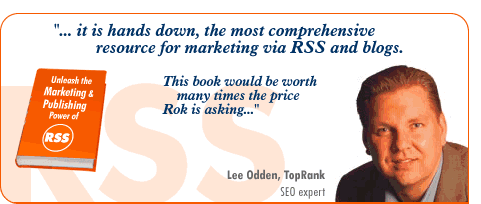| You are here: Home » The Marketing Diary » Real-life Marketing Experience » My 'Finance' Balance Sheet: Wrapping it Up [Part #4] My 'Finance' Balance Sheet: Wrapping it Up [Part #4] [Note: If you're not sure what this is, see part #1, part #2 and part #3 of this series to get the background info] OK, it's time to finish the article series on my experiences at the business daily Finance and close this chapter of my life. Before I go on with what I consider my failiures at Finance let's take a short look at the business concept, developed a few years ago by Crt, behind the internet presence.. 35% of the daily editorial content, including various business tools (Stock Watch, etc.), is reserved for registered users (free e-mail subscription). This concept is especially geared towards a long-term conversion of ordinary visitors to print subscribers. The first tactical goal of the web site is to convert an ordinary visitor in to a registered user, which also allows the company to start communicating with that user using e-mail. This is achieved by restricting access to the most important tools and content. After the user becomes better involved with the web site and reaches a certain level of attachement, the goal is to convert him in to a paying subscriber. Currently approximately 33% of the Finance's print subscription sales are generated through the web site. Content is mostly delivered through the web site and additionaly through the daily e-mail publication Business Morning and the customizable e-mail notification service Radar, which lets subscribers choose exactly what topics (by keyword, by topic and/or by author) they want to receive and exactly when and how often. All of the above combined basically makes a full demonstration of the business daily, intended to slowly convert users in to paid subscribers. The internet edition with its interactive features naturally offers added value to all of this, making the package even more attractive. In addition, the Finance-on.net is also a strong sales channel for business seminars (app. 40-70% of all attendance fees are sold through the web site) and special publications, such as the Moje Finance (My Finances) magazine. When looking back at all of this I feel proud I was an important part of the development process. In 2001 Crt started developing all of this and turned it in to a really exceptional internet project by any standard. I came in 2003 and turned the project in to a profitable marketing machine. But while there were many successes, there are also things I could have done much better. 1. Halted Development When I came on-board the #1 goal was to make the web site profitable. While we achieved that with flying colors, the development of the web site was practically put on hold. 2. Delayed Opportunities Putting further development on hold also meant delaying certain business development opportunities. Among those I'm the most sorry for Finance-on.net Club, a lifestyle edition, and Finance-on.net PRO, a web-only professional & personal financial management % investment subscription site. 3. Insufficient Web Site Optimization This one I'm really sorry for. Because I concentrated so much on profitability I missed out on optimizing the web site's conversion rates and usability based on hard data and analysis. OK, enough of the past, time to focus on the future. Related Articles -->
|

Read about real-life marketing and project management experience, views and results. Follow our projects and see what worked and what didn't and especially what you can learn from our mistakes and successes. Edited by Rok Hrastnik Unleash the Marketing & Publishing Power of RSS
The e-book that is defining RSS marketing.
|
 |
|
|





